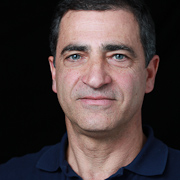IERAPSI provides a novel approach to computerised image-guided surgical planning. The project aims at providing an environment for visualising and interacting with the anatomy and pathology demonstrated by advanced imaging methods and VR techniques. At the same time IERAPSI will allow rehearsal of procedures on an individual patient and the development of training systems based on individual patient’s variations in anatomy and pathology. Today, planning of surgical procedures makes poor use of imaging data. In most cases surgeons simply study medical images from MRI, CT, etc. prior to surgery and construct an internal 3D model of anatomy in each individual case. Previous knowledge of normal anatomy is essential. Further the ability to rehearse the surgical procedure using patient specific data is extremely rare. IERAPSI will provide an interactive computerised environment for the planning and rehearsal of surgical procedures in individual patients. The most important goal is to contribute to the European Community’s social objectives by improving the provision of health and life through the introduction of modern science technology into healthcare. Specifically, IERAPSI will provide: Image review and analysis tools to allow the surgical review of CT, MRI and angiographic examinations in an interactive 2D and 3D manner; an integrated suite of image segmentation and visualisation tools intended to allow rapid and accurate identification of individual structure based on their imaging characteristics; a physics based surgical simulation system with visual and haptic feedback for training surgeons to perform operations on individual patient data. To meet the project objectives IERAPSI will address surgery of the petrous bone – a common surgical site with complex anatomy. It requires a range of surgical procedures with escalating levels of complexity. CRS4 is the partner responsible for the study and development of the surgical simulation platform. The project has produced the following tangible results: a physically motivated burr-bone interaction model, loosely based on Hertz contact theory, that includes haptic forces evaluation, the bone erosion process and the resulting debris; adaptive techniques for real-time haptic and visual simulation of bone dissection, that exploit a multiresolution representation of the bone characteristic function to adaptively trade simulation quality with speed; a dynamic direct volume rendering technique based on OpenGL register combiners that is able to render shaded representations of dynamically changing rectilinear scalar volume in parallel to simulation threads; a running prototype of the bone dissection simulator. The system is based on patient-specific volumetric object models derived from 3D CT and MR imaging data. Real-time feedback is provided to the trainees via direct volume rendering and haptic feedback. The performance constraints dictated by the human perceptual system are met by exploiting parallelism via a decoupled simulation approach on a multi-processor PC platform. The end-user evaluation of the simulator was based on three groups of users characterized as: experts (Senior ENT Surgeons); with theoretical knowledge (residents); no previous experience. Complete session traces were acquired during the training sessions and have been later analyzed and compared. The system demonstrated realistic haptic and visual rendering, and the ability of simulating complete mastoidectomy procedures.
Chiudi






